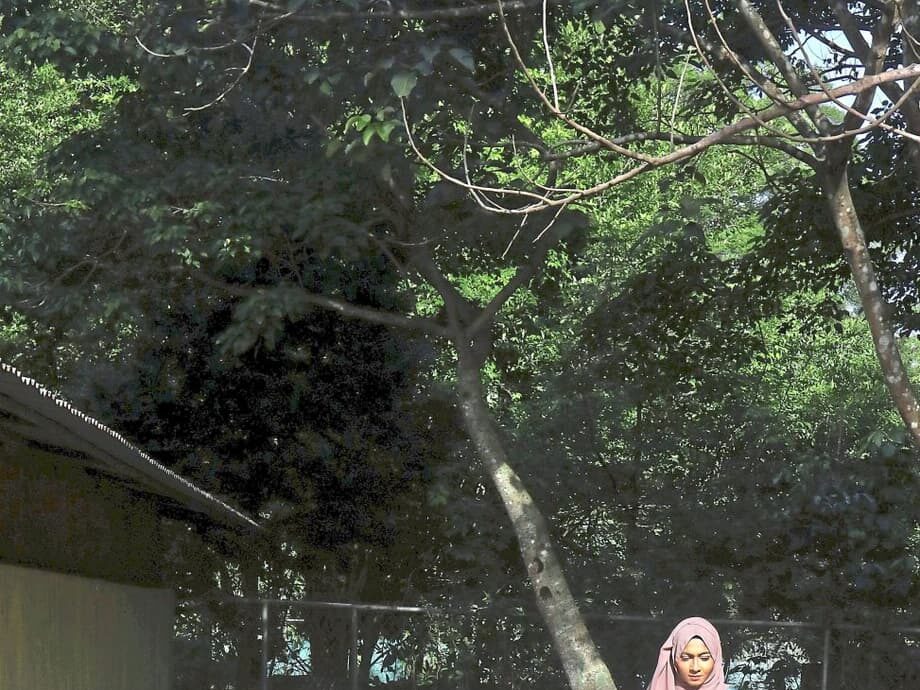Inside a morning at KeeperKu
Zoo Negara, Malaysia’s national zoo in Kuala Lumpur, relies on an energetic stream of student volunteers to help care for more than 4,000 animals. Through the KeeperKu program, young Malaysians spend a morning in a keeper’s boots, stepping behind the scenes to prepare meals, clean habitats, and learn conservation in practice. In recent weeks, colleges sent groups of first time volunteers to roll up their sleeves. Eighty six students spent a half day helping keepers tidy enclosures, chop fruit and vegetables, and build enrichment items that encourage animals to forage and explore. The program, launched in 2015, aims to turn curiosity into real skills and a lasting respect for wildlife. Participants leave with an appreciation of what professional keepers do, and why good husbandry, science based enrichment, and clean facilities matter for animal welfare.
- Inside a morning at KeeperKu
- How the program works and who can join
- What volunteers do, from animal care to education
- What participants learn
- Adult and corporate pathways to help
- Why volunteers matter for zoos and conservation
- Safety, animal welfare, and ethical boundaries
- How to sign up and prepare
- Key Points
KeeperKu runs Thursday to Sunday from 8:00 am to 12:30 pm. Teams meet their supervising keeper early for a safety briefing and a tour of work areas. Tasks are tailored to age and experience, and supervisors set clear boundaries around animal contact. Students clean and replenish exhibits, stack browse for hoofstock, portion diets for primates and birds, and help maintain paths and viewing areas so visitors and animals stay safe. For teenagers, it is a rare chance to see how complex a modern zoo is, from kitchens and quarantine rooms to compost bays and tool sheds.
Feedback from recent participants points to steady gains in confidence, teamwork, and discipline after only one shift. Many students had their first close look at species they had only seen in textbooks. Several described the reality of zookeeping as demanding work that blends patience, observation, and physical effort. The impressions that stick tend to be small lessons, like how to scrub algae safely from a tortoise pool, why a feeding log must be accurate to the gram, or how a keeper reads a tiger’s body language before any task begins.
How the program works and who can join
KeeperKu is open to participants aged 16 and above from schools, colleges, and universities. The morning starts early, with arrival at 7:30 am for sign in and a safety talk. Zoo Negara organizes volunteers in teams, assigns them to zones, and pairs them with keepers who guide each task. The program collects a RM55 fee that supports operational needs and pays for gloves, tools, and materials used in volunteer activities. Students aged 16 and 17 require a parent or guardian signature on the application form, and all participants are asked to read the rules in advance so everyone understands expectations.
Eligibility and registration
Inquiries go through Zoo Negara’s Education Department. Prospective volunteers can write to [email protected] or call +603 4108 3422. Details and rules are outlined on the official volunteer page, which also lists available days and departments. For current dates and any changes, students should check the official page or confirm by email. The information hub is here: Zoo Negara KeeperKu Volunteer Programme.
Training and supervision
Keepers lead a safety briefing before any work begins. Volunteers receive instructions on hygiene, tool use, and how to move around exhibits without startling animals. Practical attire is expected, including closed footwear and clothing that can get dirty. Direct animal handling is not part of a typical shift, and any work close to animals happens only under a keeper’s direct supervision. The goal is to support animal welfare while giving students a realistic understanding of how professional teams operate.
What volunteers do, from animal care to education
Most student shifts focus on wildlife husbandry, the routine care that keeps animals healthy. Volunteers help clean and bed enclosures, replenish water, and prepare diets. They portion fish for aquatic birds, weigh fruits and vegetables for primates, and set browse for giraffe and antelope. If an exhibit needs fresh substrate or a pool needs scrubbing, volunteers work alongside keepers to restore a safe and tidy space. These tasks free up keepers to perform more specialized duties like health checks, training sessions, and careful observation of behavior.
Enrichment is a highlight. Enrichment means creating activities and objects that stimulate an animal’s natural behavior. That can be a puzzle feeder that makes a bear manipulate objects to reach food, a scent trail that encourages a tiger to explore, or a straw bundle that keeps a macaque troop busy foraging and shredding. Students learn how enrichment is designed, why it is rotated, and how staff evaluate whether an activity is safe and effective.
Beyond animal care: departments that need help
KeeperKu also places volunteers in other parts of the zoo. Students assist with education sessions, help visitors with simple questions at information points, support public relations and customer service during busy periods, and lend a hand in the park and gardens teams that keep paths, plantings, and shade areas in good condition. Some days include errands for the veterinary hospital, like moving supplies or preparing clean spaces, which exposes students to the clinical side of animal care without stepping into procedures. Seeing how departments interconnect helps students appreciate that a national zoo functions like a small city with specialized trades, strict safety protocols, and a mission that links care, education, and conservation.
What participants learn
Students often arrive thinking zookeeping is about feeding and watching animals. They leave understanding that observation skills, time management, and meticulous recordkeeping matter just as much as strength and stamina. Working in a team teaches communication in noisy work areas, and following instructions builds trust between keepers and volunteers. The intangible lesson is empathy. Cleaning an exhibit teaches why a spotless space reduces stress and disease risk. Preparing a diet to a precise recipe shows respect for species needs rather than guesswork.
University groups have highlighted the program’s value for personal growth. Accounting and engineering majors, for example, put soft skills into practice outside the classroom by organizing shifts, splitting responsibilities, and solving small problems on the spot. Many describe the half day as eye opening because it connects big ideas like biodiversity and habitat loss with practical tasks that students can do well. The experience often inspires students to take environmental topics more seriously in their studies and community work.
Adult and corporate pathways to help
While KeeperKu is designed for students, Zoo Negara has revived a corporate program known as the CSR Green project for adult participants. Companies can send teams, typically from 30 participants upward, for a structured morning that mirrors student activities. Corporate groups assist keepers with enrichment, husbandry tasks, exhibit cleaning, and food preparation under supervision. The format is similar to KeeperKu, adjusted to match group size and time constraints. This pathway gives working adults a chance to contribute and can be built into workplace volunteer calendars.
There has been growing public interest in opportunities for private adult individuals. The zoo has explored ways to involve adults beyond corporate groups. As of late 2025, the most consistent option for adults is through corporate participation, while the student route remains the main volunteer track for individuals. Interested companies can contact Zoo Negara for scheduling and requirements.
Why volunteers matter for zoos and conservation
Modern zoos balance animal care, research, education, and visitor services. Daily husbandry is labor intensive. When trained volunteers handle routine cleaning, food prep, and simple maintenance, keepers can spend more time on behavioral enrichment, training that eases veterinary work, and careful monitoring of diet and health. The result is better welfare and smoother operations.
The impact goes beyond one morning. Volunteer experiences often convert into ambassadors for wildlife. Students share what they learned with family and friends, spread practical messages like choosing products with certified sustainable palm oil, and return to campus projects with conservation in mind. Internationally, youth programs at leading institutions show the same pattern. Chester Zoo in the United Kingdom, for instance, involves hundreds of young volunteers each year and ties their work to a long term conservation plan that backs threatened species. The ethos is similar at Zoo Negara, which aims to expand education partnerships and give young Malaysians credible pathways into conservation skills while keeping animal welfare central.
Safety, animal welfare, and ethical boundaries
KeeperKu is built around safety and respect for animals. Volunteers do not handle wildlife on their own, and close access happens only under a keeper’s direct supervision. The format is designed to teach safe habits, like using tools correctly, checking locks and latches, and keeping a clear exit path. These procedures protect people and reduce stress for animals, many of which are powerful, quick, or easily frightened.
Volunteers are reminded that a good experience is not measured by touching animals. It is measured by doing tasks that help animals thrive. That means accurate diet prep, clean water, enrichment that engages natural behavior, and exhibits that are tidy and secure. Ethical guidelines also cover visitor areas. Volunteers model good behavior by keeping noise down near sensitive species, discouraging feeding from the public, and leaving habitats as undisturbed as possible after work is done.
How to sign up and prepare
Students who want to join should plan a simple checklist. Confirm a date, submit the application with any required consent if aged 16 or 17, and arrive on time for the safety briefing. Wear clothes that can get dirty, closed shoes, and bring a refillable bottle. Prepare to listen, ask questions, and follow instructions. The morning moves quickly, and small details make a difference in animal care.
- Age requirement: 16 and above for students. Parent or guardian consent needed for ages 16 and 17.
- Schedule: Thursday to Sunday, 8:00 am to 12:30 pm. Arrival at 7:30 am for safety briefing.
- Fee: RM55 to support volunteer equipment and operational needs.
- Contact: [email protected] or +603 4108 3422 for the Education Department.
- Official info and forms: KeeperKu volunteer page.
- What to bring: closed shoes, sun protection, water, and a positive attitude toward teamwork and learning.
Zoo Negara has been actively calling on students to join. In a recent social post, the zoo underlined the spirit of the program and how volunteers can contribute across departments.
Zoo Negara wrote: “Calling all students! Did you know you can be a volunteer at Zoo Negara? Our KeeperKu program welcomes all students aged 16 and above from schools, colleges, and universities! Participants will not only get the opportunity to work with animals on wildlife husbandry and enrichment but also support departments such as Education, Public Relations, Customer Service, and others. Want to know more or sign up? Just click this link or drop us an email at [email protected]. Hope to see you soon!”
That invitation captures the program’s aim. KeeperKu teaches useful skills, supports animal care, and lets young people see what conservation looks like in practice. Many students finish the morning tired, proud, and ready to encourage friends to volunteer next.
Key Points
- KeeperKu gives students aged 16 and above a structured half day of real zookeeping tasks at Zoo Negara in Kuala Lumpur.
- Recent college groups, including an 86 student cohort, supported cleaning, diet prep, enrichment, gardening, and grounds work.
- The program runs Thursday to Sunday, 8:00 am to 12:30 pm, with a 7:30 am safety briefing.
- A RM55 fee supports equipment and operational needs for volunteer activities.
- Age 16 and 17 participants need parent or guardian consent, and all volunteers must follow safety rules under keeper supervision.
- Duties span wildlife husbandry and enrichment, plus roles in education, public relations, customer service, veterinary support, and park and gardens.
- For adults, Zoo Negara has reinstated a corporate volunteer route through the CSR Green project for company teams.
- Contact [email protected] or +603 4108 3422, and visit the official volunteer page for details and sign up.











